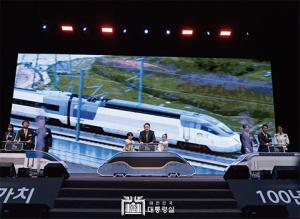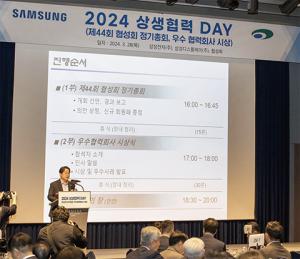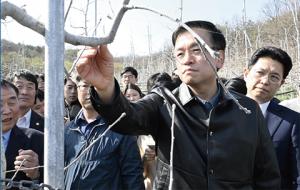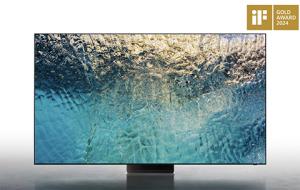 |
운당도예/김용득대표
동화도자기 생산으로 한국 도자기 수준 끌어올리는 운당도예 김용득 대표
국내 맥 끊긴 동화 도자기 기법 되살려 무형문화재로 발전하는 운당도예
중국에서 전해진 한국의 도자기 역사는 고려시대에 이르러 절정기를 맞았다. 청자, 백자 외에도 구리 안료를 사용해 붉은 빛을 띤 동화(동화) 도자기는 혼란한 고려 말과 임진왜란 등을 겪으며 맥이 끊긴 것으로 알려졌다. 김해시 진례에 위치한 운당도예 김용득 대표는 잊혀진 동화 도자기의 기법을 전수받고 발전시켜 청자, 백자를 이어 한국을 대표하는 도자기 예술이자 김해를 대표하는 무형문화재, 문화도시 김해의 명성을 높이는 명품으로 만들고 있다.
김해시 진례면 자리한 운당도예 김용득 대표는 오랜 장인 정신과 연구 끝에 실전된 것으로 알려졌던 동화 자기를 현대에 생산하는 데 성공해 한국 도자기 예술의 경지를 넓히고 김해를 대표하는 명품으로 등극시킨 도자기 명인이다.
김용득 대표는 “도자기는 통일신라 말 도자기 기술이 본격적으로 전래되고 고려 때 꽃을 피웠다. 고려시대는 도자기 전성기로 고려청자가 특히 유명하지만 12세기 무렵 고려에서 청자의 상감기법을 바탕으로 유약에 구리 안료와 산화 등 8가지 원료를 넣고 열을 가해 오묘한 붉은 색을 띠게 만드는 기법이 시작되었는데 이것이 진사, 현대의 동화자기다. 중국에서도 14세기 경 부터 시작되었으니 우리가 200여년이나 앞선 종주국이자 고유 기술인 것이다.”라는 말로 동화자기 역시 갑작스레 탄생한 것이 아닌 우리 도자기 역사의 일부라고 강조하며 여러 난리를 겪는 동안 잃어버렸던 동화자기를 현대에 되살리고 한층 발전한 형태로 업그레이드 시켜 현대에 맞는 실용 도자기이자 예술의 한 부분, 지역사회와 문화 발전에 이바지하여 현대 사회에서 가까이 하고 애용할 수 있는 도자기의 문화 인식과 장인정신, 격조의 정수를 보여주고 있다.
순수에서 요염까지 다양한 형태
도자기의 생명과 질을 결정하는 것은 온도다. 800~1,000℃의 토기를 “도기" 1,100~1,400℃에서 만드는 것을 "자기"라고 하여 이를 합쳐 도자기라 한다. 나말여초기 중국에서 전해져 중국적 영향을 받던 한반도 도자기는 10~11세기에 송나라에서 다양한 제조기법이 소개되고 고려 도공들의 연구와 노력 끝에 본격적으로 민족 고유 색채를 띠면서 상감 기법 득 독자적 기법을 창조하여 외국에까지 명성이 자자한 도자기 문화의 꽃을 피웠다. 독특한 고려자기들이 만들어지던 시기 최초로 구리 안료를 사용해 붉은 빛을 띠는 도자기도 이 때 탄생되었는데 중국보다 앞선 한반도 고유의 도자기 기법이다. 이것이 ‘진사’라 불린 현재의 동화자기로 한 때 실전되어 존재조차 묻혔던 이 자기가 복원된 것은 김 대표의 장인정신에서 비롯된 도전과 끊임없는 노력, 민족문화 계승에 대한 의무감에서 기인한다.
‘진사’는 청자나 백자에 비해 제조방식이 너무 어려워 발전하지 못한 영역이었다. 조선시대까지 활발하게 생산되었지만 몽고간섭기와 임진왜란 등의 외침을 거치며 도공들이 한꺼번에 외국으로 끌려가면서 사실상 전수되지 못했는데 당시 끌려간 장인들 중 진사 기술을 가진 이들이 일본에서 이를 전수했고 한 재일교포에 의해 김해지역에 알려졌다. 김 대표는 이 기술을 접한 순간 매료되어 고려시대 순수한 방식 그대로를 배워 인고의 노력 끝에 마침내 진사를 현대에 재현해내는 데 성공, 자신이 성공해낸 이 도자기의 이름을 ‘동화’라고 다시 붙였다.
“진사(辰砂)란 중국, 일본에서 쓰는 표현이고 현대에 재탄생한 이 작품을 가리키는 고유명사가 필요하다고 여겼다. 세계 최초로 구리 안료를 사용해 한반도에서 처음 이를 제작해낸 도공들의 노력, 얼과 혼을 계승하는 의미로 ‘동화’라는 새 이름을 붙여 널리 알리고 있다.”
특유의 강렬하면서도 우아한 자태와 기운, 고려 때 고유기술 그대로를 접하면서 이에 푹 빠졌지만 복원은 결코 쉽지 않았고 무수하게 실패한 끝에 국내 최초로 자신만의 독특한 도자기 '동화잉걸호' 구현에 성공했다.
동화자기는 우선 전통잿물에 산화 등 8가지 물질을 배합한 후 전통가마에서 1300 ˚C~1400˚C의 뜨거운 온도에서 구워진다. 일반적으로 백자가 최고 1,400℃ 온도에서 만들어지는 것을 감안하면 그 이상의 복잡하고 어려운 과정을 거쳐 흙과 물에 구리, 불의 열기와 가마 속의 바람이 더해진 결과 영롱하면서도 강렬한 붉은색과 역동적인 무늬가 동화자기로 탄생하는 것이다. 이렇게 생산되는 자기는 둥근 항아리에서부터 가는 세요형, 한 쌍의 사이좋은 부부상 등 자연의 색과 의미를 담은 붉은색과 푸른 색 등 다양한 형태와 색상으로 찾아오는 이들과 도자기 애호가들의 사랑을 받고 있다.
“가장 중요한 건 불이다. 동화자기의 강점은 색에 있어 좋은 색이 안 나오면 작품이라 할 수 없기에 가스나 기름 등 현대식 가마로는 색의 느낌을 살릴 수 없는 한계가 있고 장작을 때야 작품이 나온다. 장작 가마는 작품 나올 때마다 색이 다르기 때문에 늘 땔감을 쌓아두고 고온을 맞추는 것도 일이지만 그만큼 오래 보아도 질리지 않는 작품이 나오는 것이 보람이다.”
고려 명품 생산가의 대를 잇는 중한 작업
김해 진례 토박이로 나고 자란 김 대표는 어릴 때부터 흙 만지는 일에 눈을 떴다. 흙으로 옹기를 생산하던 외조부를 보면서 저절로 흙을 가까이하게 된 그는 처음에 철사작품과 분청사기 등을 만들다가 동화잉걸호를 만들기 시작한지 20여 년째를 맞으면서 김해가 낳은 2009년 경남 올해의 최고장인 5명 중 하나로 명성이 높다. 현재 30대인 아들이 함께 작업하면서 김 대표의 기법을 전수받는 중이다. 김 대표는 자신도 외조부의 영향으로 도자기를 시작했는데 아들 역시 어릴 때부터 도자기 만들기 좋아하더니 어렵게 복원해 낸 만큼 고려 명품 생산가의 대를 잇는 중한 작업으로 여기고 있다고 한다. 그리고 도자기가 생활에 애용되는 실용도구로서의 도자기 위상을 높이기 위해 전통 자기 외에도 현대에 이용되는 다양한 생활용품을 개발 생산할 계획으로 현대에는 커피가 트랜드인 것을 감안해 커피를 내리는 커피포트, 잔을 제작하는 것이 그 일환이다. 현대인들이 커피를 즐기면서 눈으로 작품을 같이 감상할 수 있기 때문이다.
90년부터 대한민국도예대전, 국제미술대전 및 전일본전 등 국내외 28회 수상경력과 국내외 공모전 62회 , 해외공모전 9회 출품, 많은 전시회를 가진 운당 김용득 선생은 2008년 신지식인 인증에 2009년 경남 올해의 최고 장인에 이어 2016년 동화자기 무형문화재 신청을 준비 중으로, 동화자기의 가치를 인정받아 더욱 발전시켜 전수해 나가겠다는 각오를 다지고 있다.
이에 김용득 대표와 그의 맥을 이어가고 있는 운당도예는 장인정신과 민족문화계승이 낳은, 우직하고 꾸미지 않으면서도 우아한 화려함과 인간미를 가진 동화자기로 국내외에 명성을 알려나가고 있다.
Undangdoye, CEO Yongdeuk Kim
Raising the level of Korean porcelain with Donghwa Porcelain
From reviving Donghwa Porcelain method to registering intangible cultural asset
Undangdoye is Located in Jillye, Gimhae and the CEO Yongdeuk Kim is the very person who made Donghwa Ceramics as a representative regional masterpiece through his artisan spirit and continuous R&D. Kim says "the techniques of making ceramics were introduced to Korea in earnest in late Unified Silla and blossomed in Goryeo Kingdom which was the heyday of ceramics in which Goryeo Celadon became very famous. Donghwa Porcelain, on the other hand, was developed around 12th century by adding 8 kinds of ingredients including enamel, copper pigment and oxidation based on inlaying technique to create delicate red. It was started in 14th century in China which means that Korea developed it 200 years earlier. But the method of producing the porcelain was lost through Korea's tough history and Kim became the very person to revive the method with upgraded version to make it used in our lives and to contribute to regional and cultural development. Kim shows artisan spirit and dignity through producing Donghwa Porcelain.
Various shapes from purity to sensual charm
Temperature decides the life and quality of porcelain. 800℃ to 1,000℃ earthenware made in 1,100℃ to 1,400℃ is called porcelain. It was introduced from China and various producing methods were introduced from Song Dynasty around 10th and 11th centuries. Goryeo artisans eventually developed Goryeo style porcelain and created a unique method of making famous product such as Goryeo Porcelain. Donghwa Porcelin, which originally called as Jinsa, also was developed around this time. But the method was lost as time goes by and Kim strongly felt the need to revive it in the hope of succeeding the tradition and culture. Producing Jinsa was more difficult than celadon and white porcelain but it was actively produced until the Joseon Dynasty. After the invasion from Mongolia and Japan, numerous potters were taken to foreign countries and the production was eventually discontinued. The potters spread the technique to Japanese and one of Korean Japanese brought this technique back to Gimhae. Kim was enchanted by the method and succeeded reviving it in modern terms with perseverance and called it as Donghwa. Kim says "Jinsa is the expression used in China and Japan and I felt the need to give our own name. I named it as Donghwa to praise Korean potters effort, spirit and soul." It was not easy to revive original forms and energy but Kim eventually created his own Donghwa Inggirlho after numerous failures. Donghwa Porcelain is made by mixing 8 kinds of ingredients in lye and baked in 1,300˚C to 1,400˚C. Considering the fact that white porcelain normally is baked in 1,400˚C, Donghwa Porcelain has to go through much more difficult and complicated procedure in order to create delicate red and dynamic patterns. Donghwa Porcelain is provided in various shapes and colors including round, slender, couple, red and blue. Kim says "the most important factor is fire. If the color of the porcelain is not good it cannot be called as a masterpiece and the good color can only be gained by wood fire. Compared to oil and gas fire, I have to pay a lot of time and effort to adjust temperature but when the result is good I feel really worth."
Succeeding the masterpiece of Goryeo porcelain
Kim was born in Jillye, Gimhae. He grew up with playing the soil as his grandfather produced pottery. He started making wire products and grayish-blue-powdered celadon and eventually developed Donghwa Inggirlho. After more than 20 years of his efforts and hard work he was chosen as one of 5 master artisans in South Gyeongsang Province in 2009. Currently, Kim's son in his 30 is working together with him and learning the method. Kim said that he naturally started making porcelain by growing up in the environment and his son is following the same path. Alongside producing traditional porcelain, Kim is also making various modern products such as coffee pot and cups so that people can appreciate art works while enjoying coffee. Meanwhile, Kim received various awards for 28 times including Korea Pottery Competition and International Art Competition and had 62 contest exhibits and 9 overseas contest exhibits. He was also chosen as one of 5 master artisans in 2009 and is preparing to register Donghwa Porcelain as intangible cultural asset in the hope of developing the porcelain and passing down its technique.
양성빈 기자 yho0510@hanmail.net







